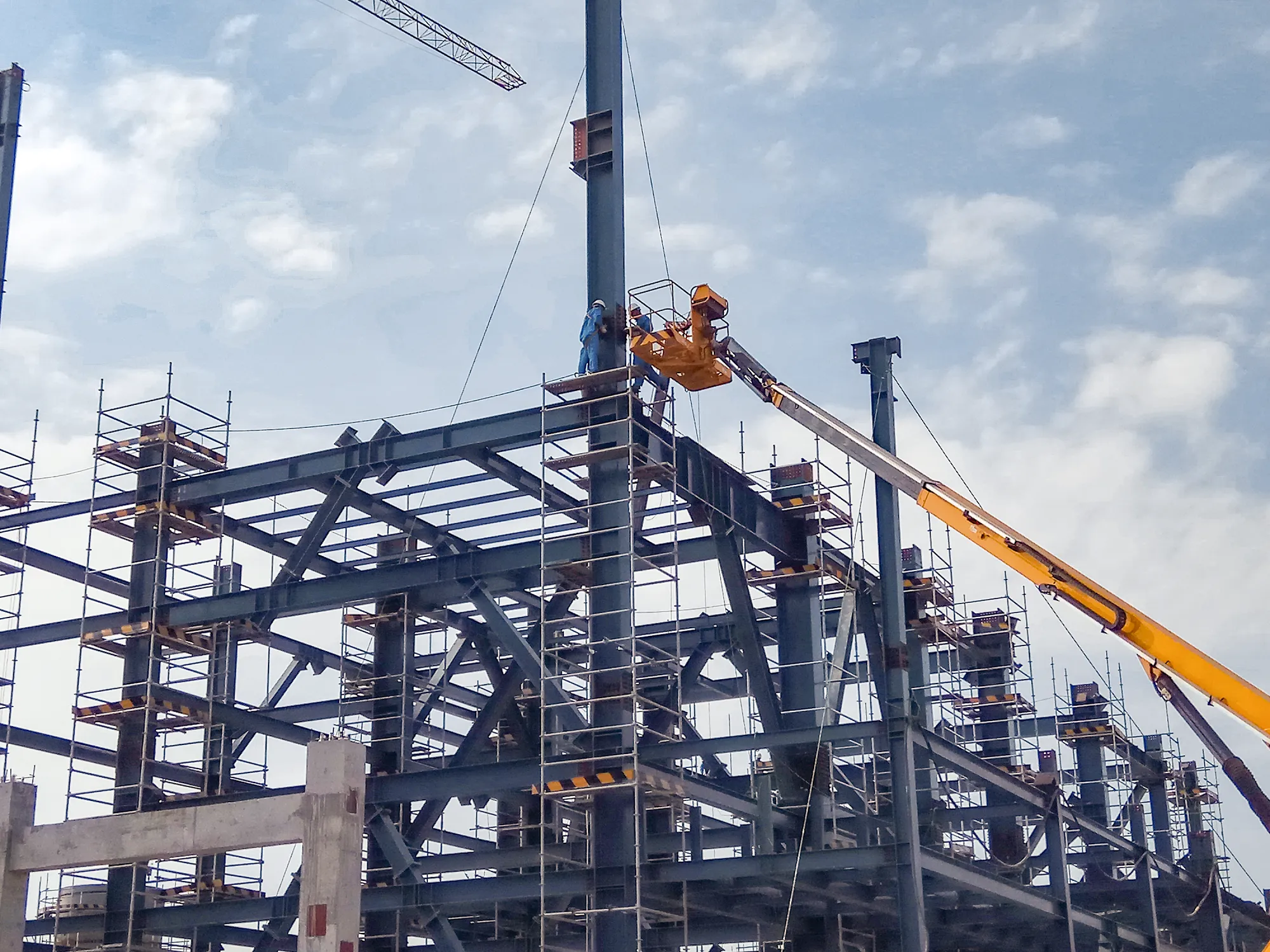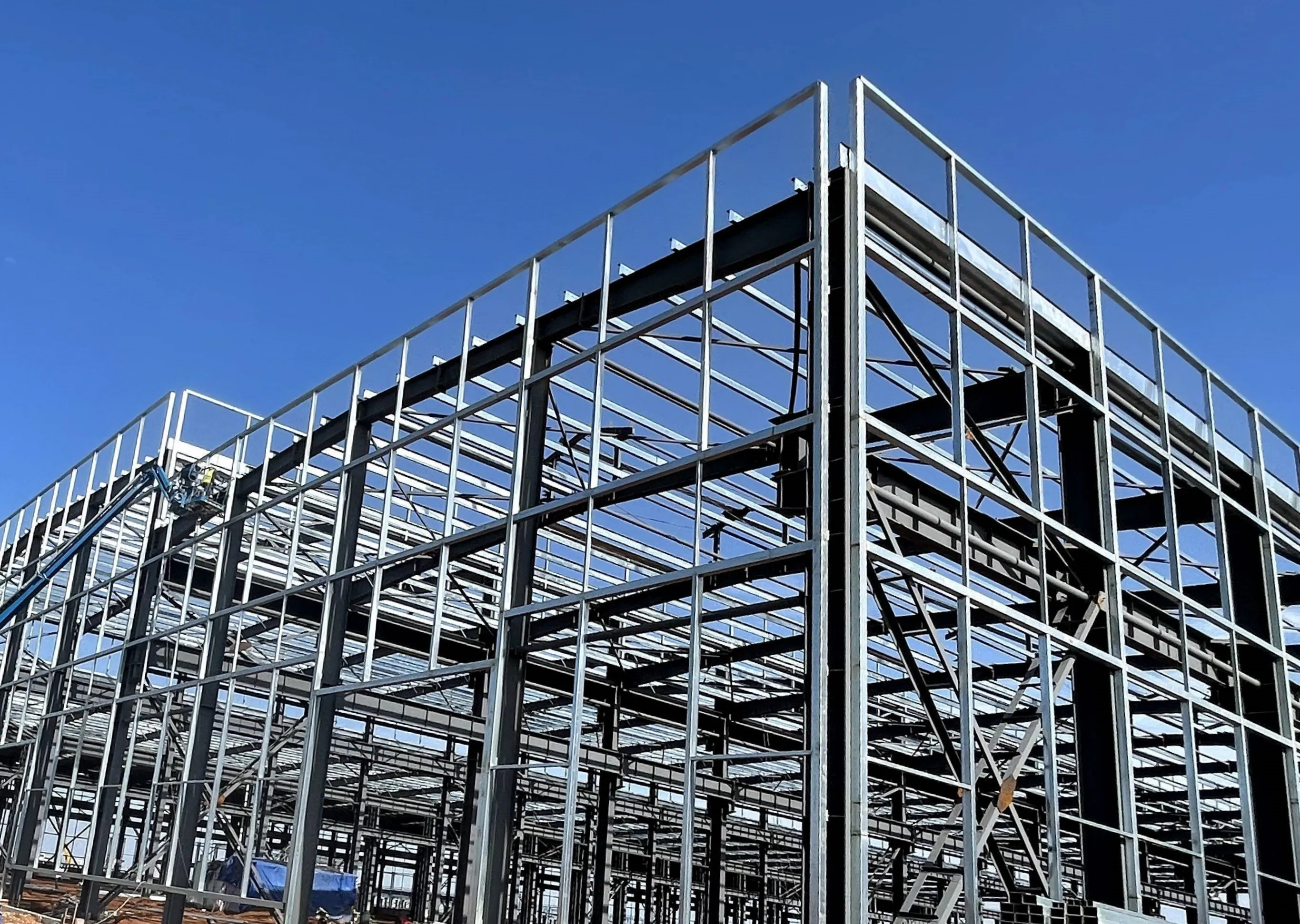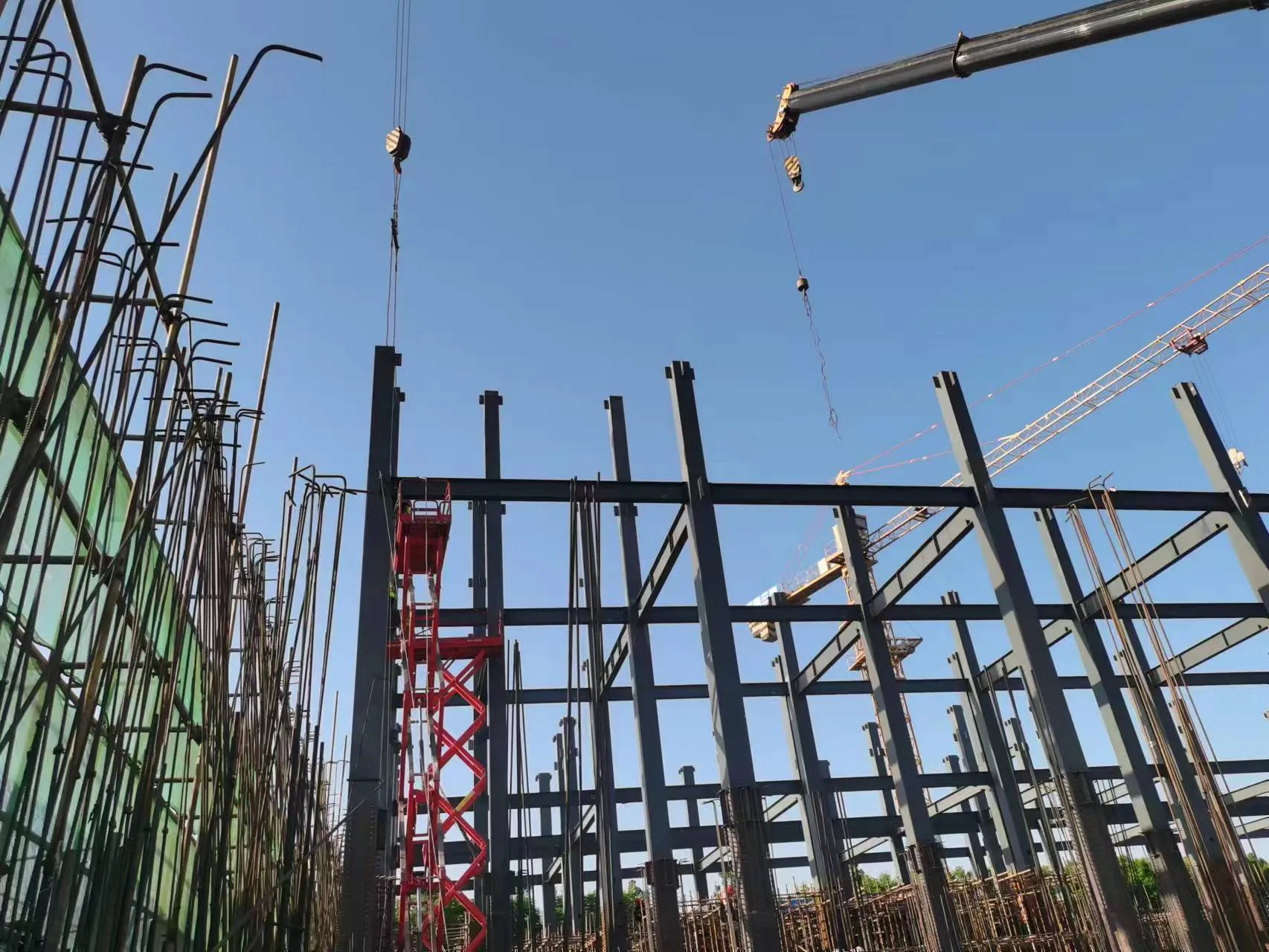Time:2024-11-19 03:38:21 Source:Sanjian Meichen Steel Structure
Agricultural steel structures refer to prefabricated or custom-engineered buildings made primarily from high-strength steel.These structures are widely used in farming and agricultural operations for their durability, flexibility, and cost efficiency. Compared with traditional brick or wood buildings, steel structures can withstand harsh weather conditions, require less maintenance, and offer longer service life.
As modern agriculture moves toward mechanization and large-scale production, steel buildings have become the foundation of many farms and agricultural enterprises worldwide.
Agricultural steel structures can be adapted for a wide range of applications across the entire agricultural industry, including:

1. Storage Buildings
Grain Storage: Steel silos and sheds protect grains from weather and pests.
Cold Storage: Steel structures house temperature-controlled environments for fruits, vegetables, and other perishables.
Machinery Storage: Secure storage for tractors, harvesters, and other farming equipment.
2. Livestock Shelters
Dairy Barns: Housing for cows, with options for ventilation and insulation.
Poultry Farms: Large, open-span steel buildings for poultry rearing.
Sheep and Pig Sheds: Well-ventilated and durable shelters for different livestock.
Equestrian Facilities: Stables, riding arenas, and hay storage for horse farms.
3. Greenhouses
Steel-framed greenhouses provide strength, durability, and resistance to environmental stressors while supporting the growth of plants and crops in controlled environments.
4. Workshops and Repair Facilities
Enclosed spaces for repairing and maintaining agricultural equipment, including welding and mechanical work.

5. Feed and Fertilizer Storage
Specialized structures for storing bulk feed, fertilizers, and chemicals in a controlled, weatherproof environment.
6. Irrigation Equipment Shelters
Protecting pumps, pipes, and irrigation equipment from environmental wear and tear.
7. Crop Processing and Sorting Areas
Facilities for processing, sorting, and packaging agricultural produce.
8. Animal Processing Facilities
Structures for slaughterhouses or meat processing units, designed for hygiene and efficient workflow.

9. Fencing and Barriers
Steel fencing for farms, including cattle barriers and security fencing for crop fields.
10. Solar Energy Support Structures
Steel frames for solar panels on farms to support renewable energy generation.
Steel structures offer flexibility in design and construction, making them a preferred choice for modern agricultural needs.
High Durability: Steel structures are resistant to corrosion, pests, and fire, making them suitablefor humid or extreme weather conditions.
Fast Construction: Prefabricated steel components allow for quick on-site installation, reducing project timelines and labor costs.
Cost-Effective: Lower maintenance costs and long lifespan reduce total ownership expenses.
Flexible Design: Can be easily expanded or reconfigured as agricultural operations grow.
Sustainability: Most steel used in construction is recyclable, making these structuresenvironmentally friendly.
Better Ventilation and Insulation: Modern design techniques allow for temperature control,vital for livestock and greenhouse applications.
When planning an agricultural steel structure, several factors must be taken into account:
Load and Span Requirements:Agricultural facilities often require large open spaces without interior columns. Using H-beams or portal frames allows for wide spans and stable structure.
Environmental Conditions: Steel grades and coatings should be selected based on humidity, temperature, and exposure to chemicals or animal waste.
Thermal Performance: Insulated sandwich panels or coated aluminum sheets can improve energy efficiency in cold storage and greenhouses.
Ventilation and Lighting: Proper design ensures adequate airflow and natural light, improving productivity and reducing energy costs.
Foundation and Drainage: A well-designed foundation prevents water accumulation and supports long-term structural stability.
Livestock Farm in Southeast Asia: A light steel barn structure designed with natural ventilationand anti-corrosion coating has helped reduce animal mortality and maintenance costs.
Grain Storage Facility in Europe: A prefabricated steel warehouse with thermal panels provides year-round protection for large volumes of harvested grain.
Smart Greenhouse Project: Integrated steel frames with solar panels and automated control systems increase crop yield and reduce energy consumption.
These examples demonstrate how steel structure technology supports the modernization and efficiency of the agricultural sector globally.
The future of agricultural construction is heading toward sustainability, automation,and smart management. Some emerging trends include:
Integration of solar power systems and energy-efficient insulation materials.
Use of smart monitoring sensors for temperature, humidity, and livestock management.
Development of modular steel structures that can be disassembled and relocated as production needs change.
Adoption of green building standards and environmentally friendly coatings to reduce carbon footprints.
These innovations make steel structures an integral part of the global shift toward smart and sustainable agriculture.
Agricultural steel structures are transforming modern farming by providing reliable, flexible, and cost-effective solutions. From livestock housing to storage and processing facilities, steel buildings deliver outstanding performance under diverse conditions.
As technology advances, agricultural steel structures will continue to evolve, supporting farmers with more sustainable, efficient, and innovative infrastructure solutions.